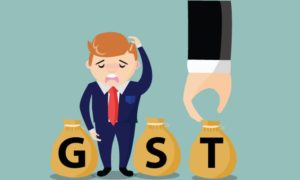AA-rated bonds have emerged as a promising investment option, offering returns that easily beat those of fixed deposits (FDs). These bonds allow investors to earn 30–50% higher returns compared to traditional FDs.
The first thing one needs to understand when embarking on an investment journey is risk tolerance. The second crucial aspect is ensuring that the investment journey remains stress-free and profitable. Bond investments are one such instrument that ensures investment stability and steady returns.
Read More: Multiple Banks Revise Fixed Deposit Interest Rates In May 2024: Check Latest Rate Offered By Bank
Bonds offer a stable return on investments with low to moderate risk tolerance. ‘A’ and above-rated bonds provide predictable returns and fixed repayment schedules, with historically low default rates, typically less than 1%. By aligning your investments with your risk tolerance, you can navigate the financial landscape with confidence and peace of mind.
AA-rated bonds have emerged as a promising investment option, offering returns that easily beat those of fixed deposits (FDs). These bonds allow investors to earn 30–50% higher returns compared to traditional FDs. This also challenges the conventional financial wisdom of many, who don’t rank this debt instrument higher in the hierarchy of investment instruments. With AA-rated bonds, investors can secure their financial future with confidence.
Evaluating credit ratings from SEBI-registered agencies
The most convenient way to measure bond risk is to look at the credit rating provided to it by SEBI-registered rating agencies like CRISIL, ICRA and CARE.
Nikhil Aggarwal, Founder & CEO of Grip Invest, discusses the correlation between bond ratings and returns, highlighting how AA-rated bonds can potentially yield higher returns compared to FDs.
The returns from bonds are linked to their ratings, meaning that better-rated bonds typically offer lower returns. In other words, with lower risk (represented by a better rating), investors can expect lower returns. For instance, AA bonds typically offer returns of 9-10%, while A-rated bonds can yield 10–11%. Bonds rated in the BBB range can generate returns of 12-14%. Even with an AA-rated bond, and investors can potentially generate 30-50% higher returns than FDs, making them a very lucrative investment opportunity, says Aggarwal.
Talking about how bonds can help one achieve short-term goals, he said different bonds are available with different tenures. There are bonds of large, well-known corporates currently available with tenures of just 3–6 months that investors can use to achieve their short-term investment goals.
Several bonds, like government bonds or corporate bonds such as those of Navi, also have an active secondary market, says Aggarwal, adding that this means investors could invest and sell as and when required. “Such an investment strategy would enable investors to earn 50% higher than fixed-deposits while having the flexibility of short-term tenures.”
Read More: Income Tax: Filing ITR early this time? Here are 8 key strategies to optimise tax savings
How to assess risk tolerance
On how to asses risk tolerance and align that with financial goals, the Grip Invest CEO states that an investor’s risk tolerance is driven by a combination of age, income, financial liabilities, job security, existing savings as well as mental framework and appetite for risk or uncertainty. There are several tests including psychometric tests available online that can help investors understand their risk tolerance levels, he stressed.
Making investment decisions based on risk tolerance is very important to make sure that the process of making and holding investments does not generate stress, he further said. Investments are most profitable when you do not take emotional decisions out for anxiety. For example, exiting an investment in a stock because of short-term volatility.
“In general, bonds are suited for investors with low to moderate risk tolerance. Historically ‘A’ and above rated bonds have had less than 1% default rates. Unlike stock markets, bonds provide predictable payouts with fixed repayment schedules and do not see volatility,” Aggarwal informed.
When asked how bonds as a fixed-income asset class have performed in the last few years in terms of returns and growth, Aggarwal said that in the last two years with inflation being higher than target levels set by the RBI, there has been an overall increase in the interest rates. “This is reflected in all fixed-income instruments from FDs to bonds. In general, this increase has been around 200 bps for example FD rates have moved from 4.5% to 6.5%. Investors have hence been able to lock in higher returns for the same level of risk. This has also led to a massive increase in investments in fixed-income. Bond investments by retail investors through OBPP platforms has grown 600% in the last 24 months.”





































